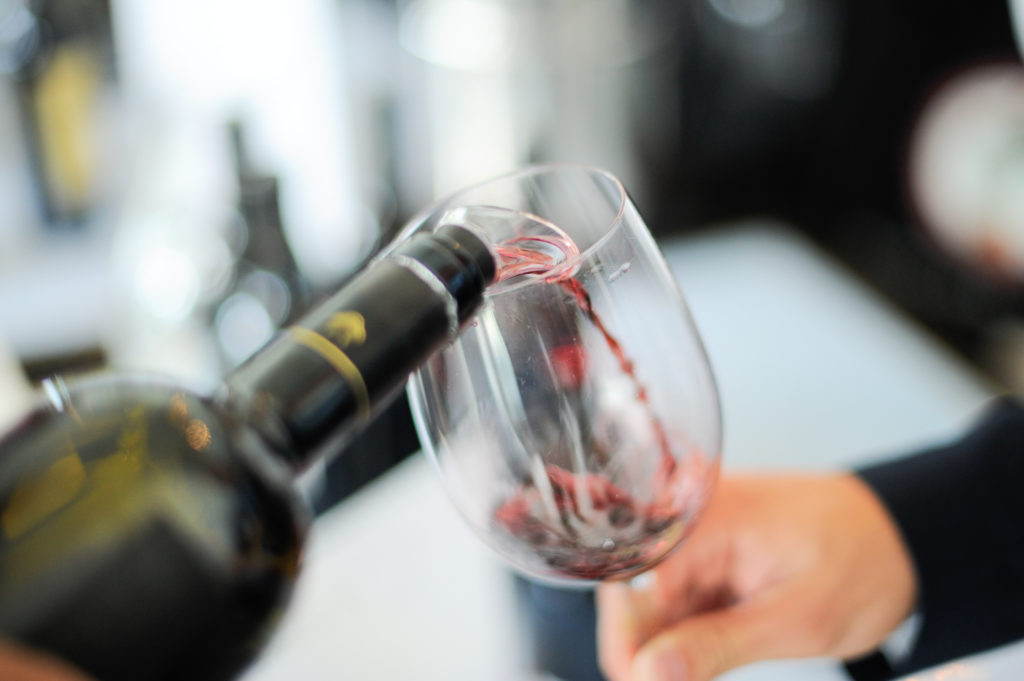Wine and food are inextricably linked in most parts of the world, in Italy they are fervently wedded. Italian wines have the grip and edge to slice through the dauntless flavors of Italian food; therefore wine and bread are as essential to an Italian dinner as fork and knife (probably more so). Along with olive oil, they make up what the Italians call the Santa Trinita Mediterranea.
Italian wines can vary substantially in flavor, texture, and body, even when the wines being compared are the same type. Ancient traditional wine making, sophisticated modern methods, or the tangle of different micro-climates powerfully influence their individual characters.
So be it Italy’s vibrant and racy whites like Pinot Grigio, from Fernando Pighin & Figli, intense Amarone from Masi Agricola; majestic Barolo and Barberesco from Michele Chiarlo; Sangiovese – one of the greatest red grapes of Italy, producing the romantic Chianti from The Folonari family, Tuscany’s most revered wine Brunello di Montalcino from Silvio Nardi; avant-garde Super Tuscan from Tenuta San Guido, Tenuta del Cabreo II Borgo, Tenuta di Biserno, Tenuta Sette Ponti, and Tenuta di Nozzole; classic Orvieto from Tenuta di Salvino; solid Carignano blend from Agricola Punica; or spicy and herbaceous Nero d’Avola from Feudo Maccari. Kobrand Tour d’Italia, showcased the depth and diversity of Italian wines where each wine expresses unique, site-specific terroir. A tasting any wine aficionado would have been proud to attend.
Kobrand’s Tour d’Italia began their eight-city tour of iconic Italian wine brands in Boston, MA on September 14th and finished on September 24th in Miami, FL. Here’s a brief synopsis of their trade tasting held at Hotel Fountainbleu’s Scarpetta restaurant in Miami.
We traveled from Friuli Venezia Giulia, Veneto, to the truffle region of Piedmont in the North as well as wines from central regions of Tuscany and Umbria and along with the islands of Sicily and Sardinia – cin-cin!!
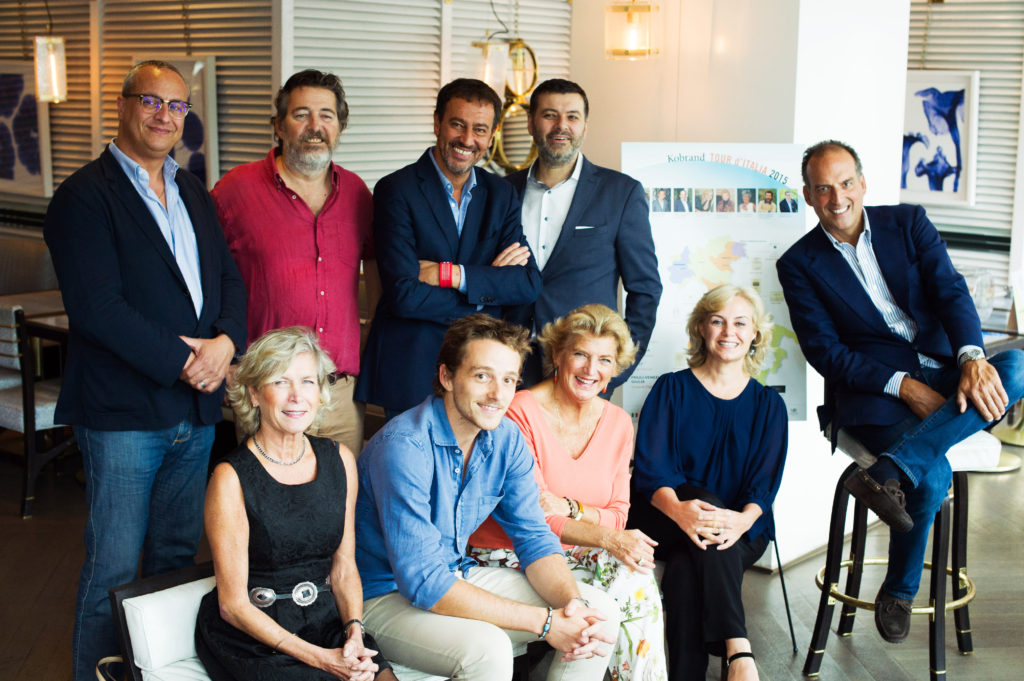
Kobrand’s Italian principles or winemakers presenting their portfolios.
- Giovanni Folonari: Tenuta di Nozzole, Tenute del Cabreo, Tenuta Campo al Mare, Tenuta La Fuga, Tenuta TorCalvano, Santa Martina, Spalletti
- Colleen McKettrick: Tenuta San Guido, Tenuta di Salviano
- Giovanna Moretti: Tenuta Sette Ponti, Feudo Maccari
- Roberto Pighin: Fernando Pighin & Figli
- Sebastiano Rosa: Tenuta di Biserno, Agricola Punica
Fernando Pighin & Figli
Mr. Roberto Pighin of Fernando Pighin & Figli is in the heart of the Friuli-Venezia Giulia region with estates in Risano, Fruili Grave DOC, and Spessa di Capriva in Collio DOC. Collio is Friuli’s finest area of production and the Pighin Collio estate is ranked among the top five in the region with its southern exposed, low-yielding vineyards on deep sandstone soils.
The Pinot Grigio Collio DOC 2013 displayed intense citrus aromas, with vibrant acidity, pear and apple on the palate with a crisp finish.
The PG Fruili Grave DOC 2013 showcased candied banana and pear, with bright acidity, and medium body that should develop well in the bottle for up to four years. The gravelly, sandy subsoil of Grave del Friuli forces the roots of the vine to grow deep into the earth, resulting in richer fruit.
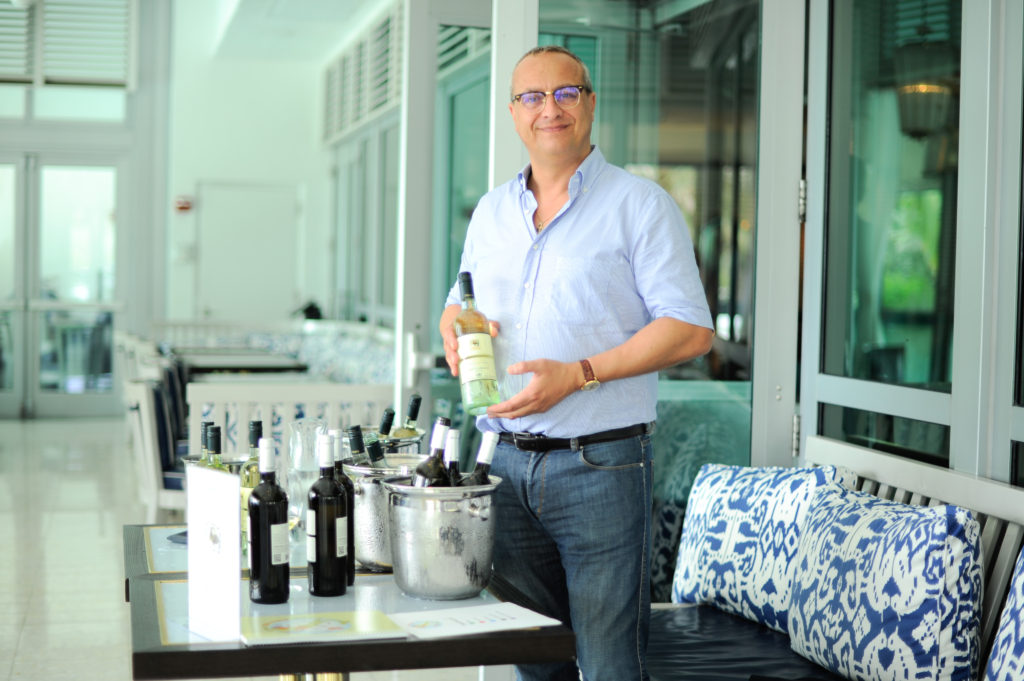
Masi Agricola
A specialist in producing Amarones and Reciotos using historic wine-making techniques, Masi is headed by the humble Sandro Boscaini.
Riserva di Costasera Amarone della Valpolicella Classico DOC 2006 (70% Corvina, 15% Rondinella, 10% Oseleta and 5% Molinara), opaque ruby red, baked cherries with coffee aromas, intense cherry. cocoa, and tea flavors on the palate, with a long finish. 2006 had dry weather and cool nights. By end of December, about 10% of Corvina developed botrytis, providing glycerine levels that give Masi Amarones their typical “illusion of sweetness.”
Costasera Amarone Classico 2005: South-west facing slopes with vines facing Lake Garda produce high-quality Amarone. Costasera, one of Masi’s most popular expressions of Amarone, deeply concentrated in color, sweet cherries and dried plums on the nose, hints of cocoa and cinnamon, full body, with long velvety finish.
Michele Chiarlo
Chiarlo’s single-vineyard Barolos (Cerequio and Cannubi) are counted among the greatest and most collectible wines of Piemonte, each one a marvelous example of terroir expression.
Dating back to the 1700s, the oldest single vineyard, or cru, within the commune of Barolo is Cannubi. Cannubi Barolo DOCG 2011: Despite a vintage that kept the winemakers on it’s toes, 2011 showcased floral and sweet spice aromas, well balanced, should age well. 1,200 cases made.
Cerequio Barolo DOCG 2011: The Cerequio vineyards comes from Langhe within the La Morra commune. Huge personality on the nose showcasing black currant and sweet spice with a rich, full body, and a lingering finish.
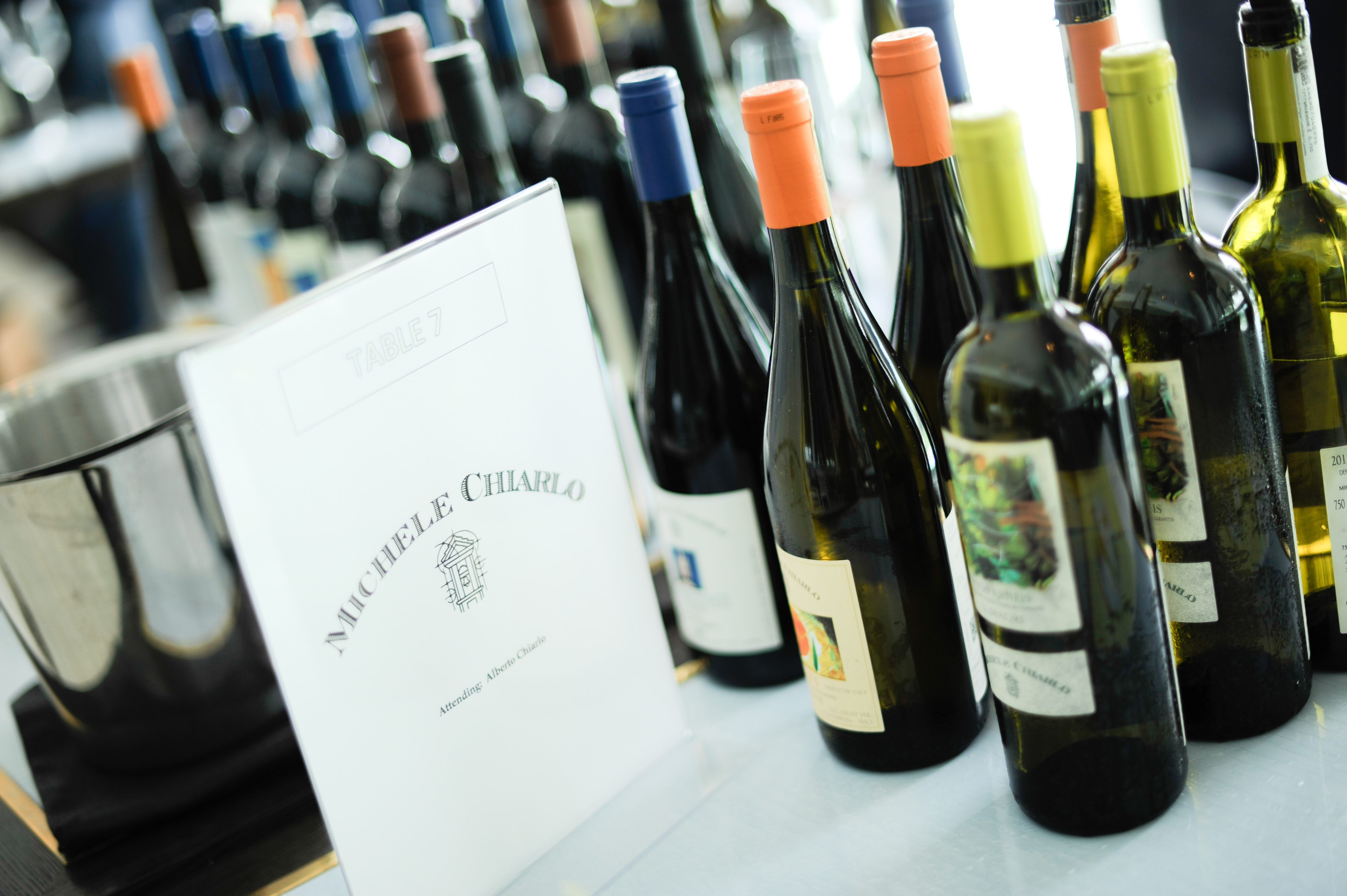
Tenute Silvio Nardi
Aside from the brilliantly delicious Brunellos, it was a pleasure chatting with the elegant Ms. Emilia Nardi, a distinguished leader in Brunello and one of the most respected women in the wine world.
Brunello di Montalcino DOCG: Tenute Silvio Nardi’s classic Brunello is a blend of the finest grapes from the Manachiara and Casale del Bosco estates. Silvio Nardi follows the strict DOCG laws required of a classified Brunello di Montalcino. Yield is limited and only the top 70% of the hand harvested grapes is used to make the wine. The fruit is carefully handpicked and sorted. The wine is aged in two types of oak and in the bottle before release.
Brunello di Montalcino Manachiara DOCG 2010: The vines for this cru or single-vineyard Brunello are more than 45 years old. 2010 an excellent vintage, 100% Sangiovese is rich with a full bouquet of black fruit and oak spices, savory and succulent. Needs cellaring to showcase potential.
Rosso di Montolcino 2013: A “mini Brunello,” ready to drink without bottle aging, 100% Sangiovese Grosso.
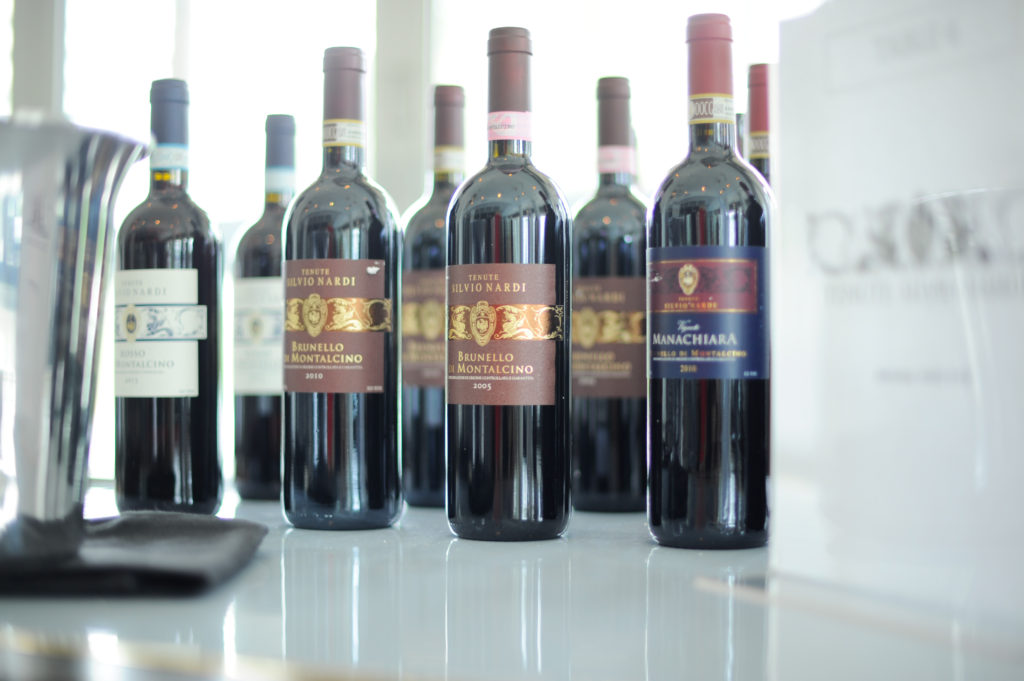
Tenuta San Guido
The most popular table in the room: Tenuto San Guido for it’s famed Sassicaia, a blend of Cabernet Sauvignon and Cabernet Franc. The first super Tuscan, Sassicaia debuted in 1968 was so successful it was granted its own appellation, Bolgheri Sassicaia DOC, as of 1994.
Sassicaia Bolgheri Sassicaia DOC 2012: Sassicaia means “the place of many stones,” and refers to the region’s gravel soil. Quoting WE – One of Italy’s most iconic bottlings, the 2012 Sassicaia is drop-dead gorgeous. A blend of 85% Cabernet Sauvignon and 15% Cabernet Franc, it boasts sensations of blue flowers, cedar, juicy red currants, ripe raspberries, white pepper and a balsamic note. Structured, radiant and loaded with finesse, it delivers everything you’d expect from a world-class wine and more.
Sassicaia Bolgheri DOC 2006: A fantastic vintage, the 2006 is just starting to show it’s true potential. Layers of dark fruit, leather, earthiness, silky and lingering finish.
Guidaalberto 2013: –A blend of 60% Cabernet and 40% Merlot, Guidalberto is a second wine from the producers of the legendary Sassicaia. 2013 being a good vintage, aged in both French and American Oak, it’s fragrant with blue and red fruit, polished tannins, and vibrant acidity. A wine which is drinking beautifully even now. Fabulous option for budget drinkers who appreciate Super Tuscans.
Guidaalberto 2004: A blend of 45% Merlot, 45% Cabernet Sauvignon and 10% Sangiovese.
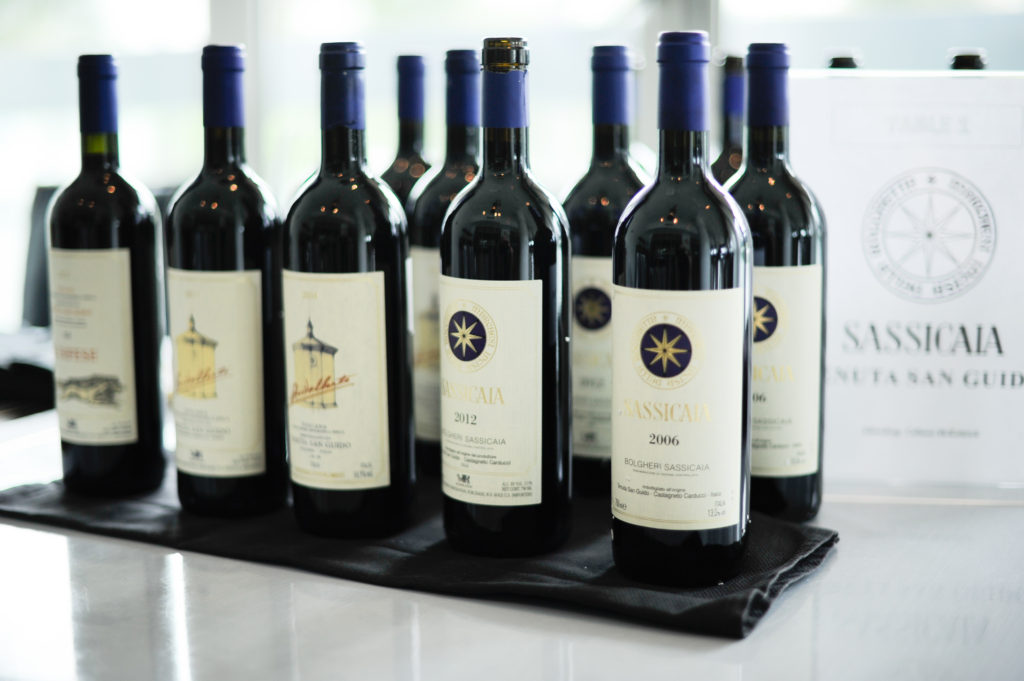
Ambrogio e Giovanni Folonari
The charming and passionate Giovanni Folonari and his father formed their own group of estates—Ambrogio e Giovanni Folonari Tenute—making small-production wines in the most prestigious appellations. Eager to share his ‘babies’ with us, his table consisted of wines from Tenuta La Fuga, Tenuta del Cabreo, Tenuta Campo al Mare, TorCalvano, Tenuta di Nozzole, Santa Martina, and Spalletti.
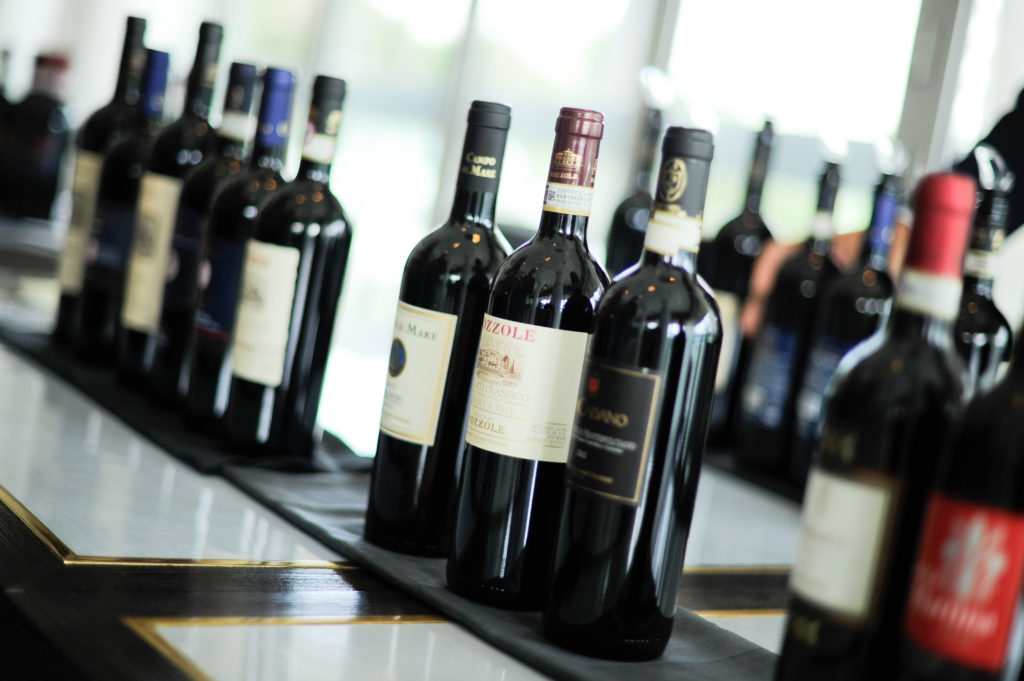
TENUTA DI BISERNO
A partnership between Marchese Lodovico Antinori, creator of Italian legends Ornellaia and Masseto, and his brother Marchese Piero Antinori, President of acclaimed Antinori Wines in collaboration with legendary Oenologist, Michel Rolland.
On Upper Maremma’s famous coast, Tenuta di Biserno lies among the hills of the village Bibbona, bordering the famed Bolgheri DOC. Representing some of Italy’s most prized terroir, Upper Maremma combines unique soil compisition with the cooling influence of the Tyrrhenian Sea. The vineyards of Bibbona and Bolgheri meet each other, as Lodovico observes, “very similar to Saint Emilion and Pomerol.”
Biserno 2010: A blend of Cabernet Franc, Merlot, Cabernet Sauvignon, Petit Verdot showcases blackberries, coffee, licorice with fine tannins and minerality.
Il Pino di Biserno: Is produced from young vineyards, a blend of Cabernet Franc with Merlot, Cabernet Sauvignon and Petit Verdot.
AGRICOLA PUNICA
Agricola Punica is an undertaking between world renowned names in the winemaking business: Dr. Sebastiano Rosa, Sardinian winery Cantina Sociale di Santadi, Tenuta San Guido, under the direction of Marchese Nicoló Incisa della Rocchetta, Santadi president Antonello Pilloni, and legendary Tuscan consulting enologist Giacomo Tachis.
Barrua Isola dei Nuraghi IGT 2012: “Barrua” is the name of the vineyard parcel within the Sulcis Iglesente region in southwest Sardinia. 2012 being a hot vintage, merlot grapes were harvested earlier. Complex aromas of ripe red fruits, spices, licorice and elegant finish.
Barrua Isola dei Nuraghi IGT 2009: A modern blend of 85% Carignano, 10% Cabernet Sauvignon and 5% Merlot, the 2012 showcases oak spices, wild herbs, and red fruit.
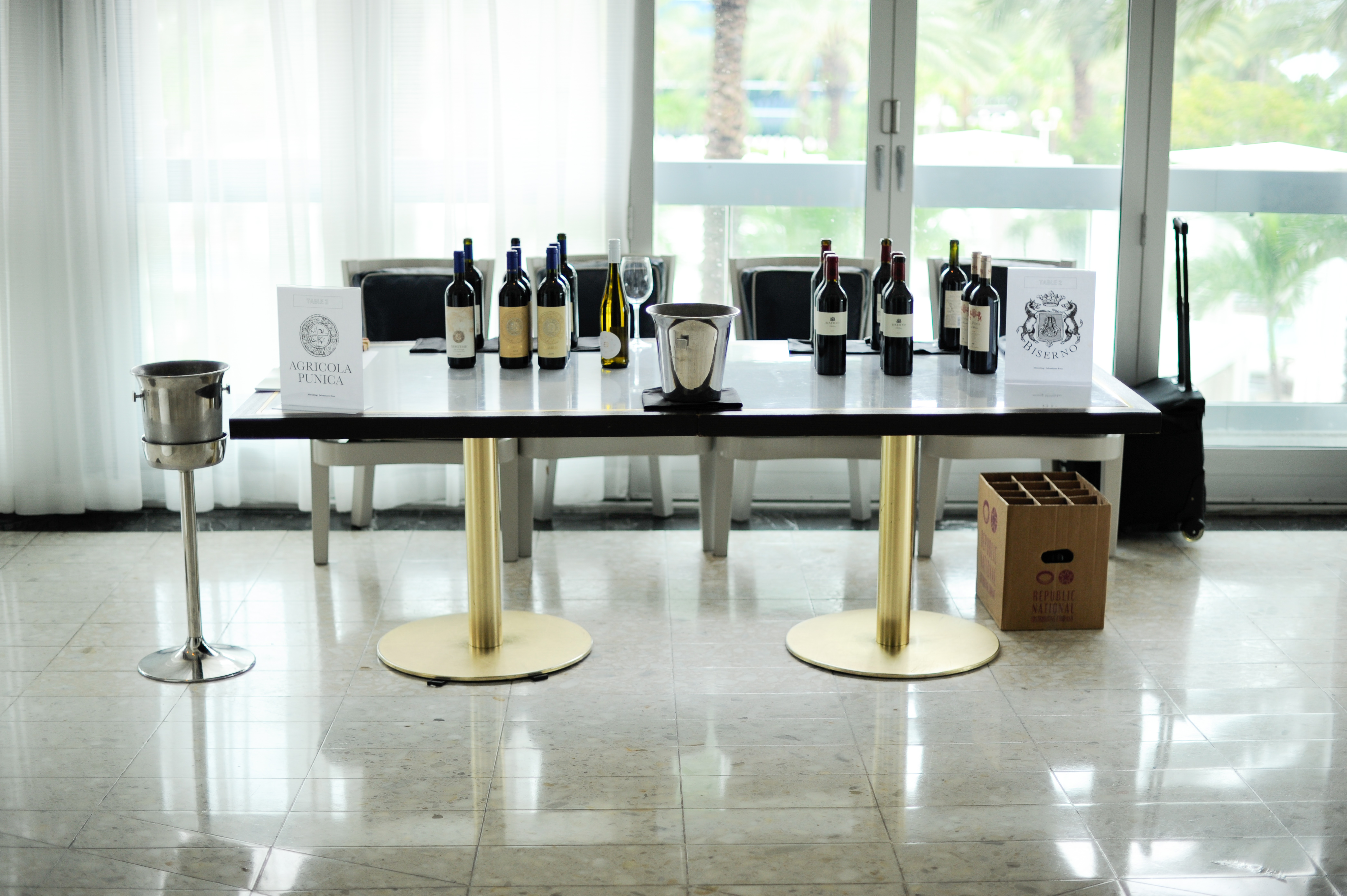
Tenuta Sette Ponti
One of Tuscany’s most innovative, quality-driven producers of world-class Super Tuscans, owned by luxury goods entrepreneur Antonio Moretti. Tenuta Sette Ponti’s first release was the 1998 vintage Crognolo, named after a wild bush, Cornus, which grows on the estate. The estate’s second release, Oreno, is named after a small river running through the estate.
Oreno Toscana IGT 2013: Oreno, the flagship wine of Tenuta Sette Ponti is a blend of Merlot 50%, Cabernet Sauvignon 40%, Petit Verdot 10%. Spicy aromas of black fruit, chocolate, full bodied with supple tannins.
Crognolo Toscano IGT 2013: A blend of 90% Sangiovese, 10% Merlot, is ruby red, with ripe cherry, bright acidity, and earthy finish.
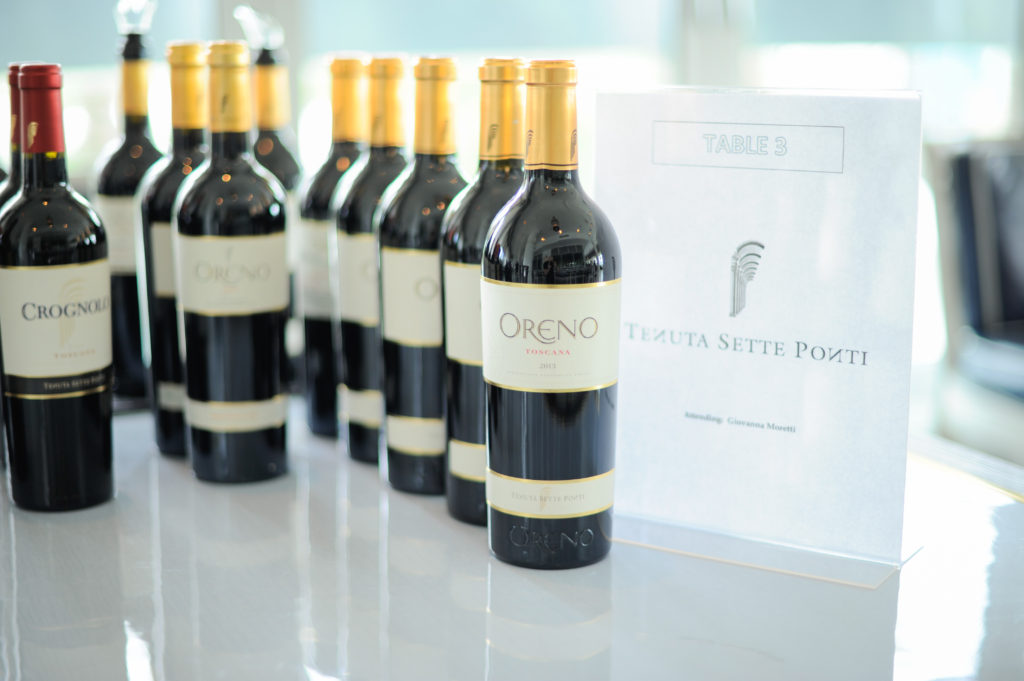
Feudo Maccari
The Sicilian estate of Antonio Moretti, owner of Tenuta Sette Ponti and Poggio al Lupo in Tuscany.
Saia Sicilia IGP 2012: Saia, its name taken from the Arab word for the irrigation canals built centuries ago to collect rainwater, is made with 100 percent Nero d’Avola, an extraordinary grape capable of producing intense, full bodied wines. The alberello method of cultivation and the aging in French oak make it a wine that stands alone in its category.
Nero d’Avola IGP: Alberello trained (bush trained) vines are 12-34 years old, and have been planted with a southern exposure at 250 feet elevation, about one mile from the sea. Grape yields are low (about 2.5 tons/acre) to encourage concentration and complexity in the wine.
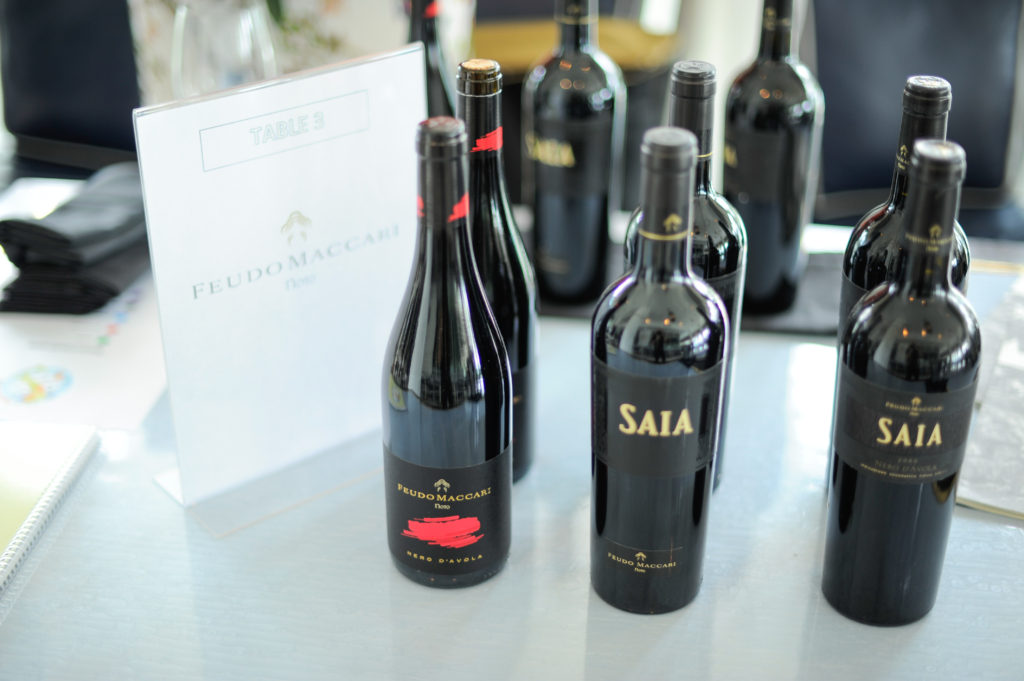
Tenuta di Salviano
Produces Orvieto Classico and international blends from the Umbrian hills.
Orvieto Classico Superiore DOCG: Trebbiano grape makes a crisp, citrus-infused, easy drinking wine.
Turlo Lago di Corbara DOC 2011: A blend of 50% Sangiovese, 30% Cabernet Sauvignon and 20% Merlot, pomegranate in color, is a full-bodied wine is the Umbrian answer to the Super Tuscans.
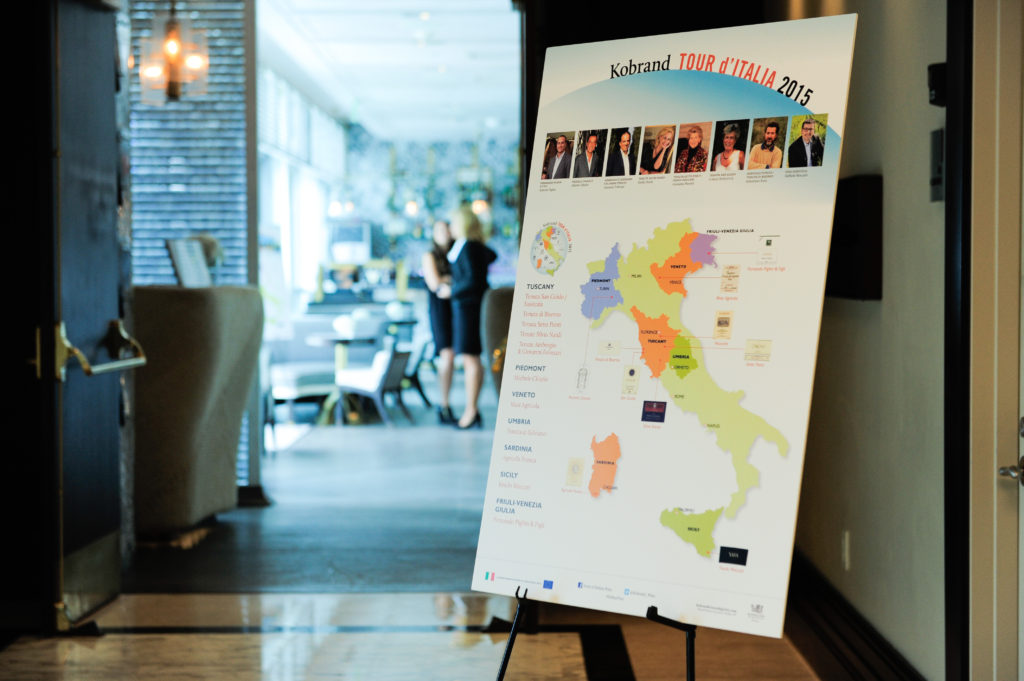
Connect with Kobrand on their Website, or the tour’s Icons of Italian Wine Facebook page or
follow on Twitter @ItalyWineIcons and #ItalianTour.
About Kobrand Corporation
Founded in 1944, Kobrand Corporation remains one of the few family-owned wine and spirits companies
in the United States. Kobrand’s portfolio of fine wine and spirits was meticulously selected according to a single, unerring principle: quality. This continued focus has made the Kobrand name synonymous with
wines and spirits of the highest caliber for over 70 years. Kobrand is the exclusive agent for an outstanding selection of fine wines from all key wine regions, including the United States, France, Italy, Spain, Portugal, Chile, New Zealand.
